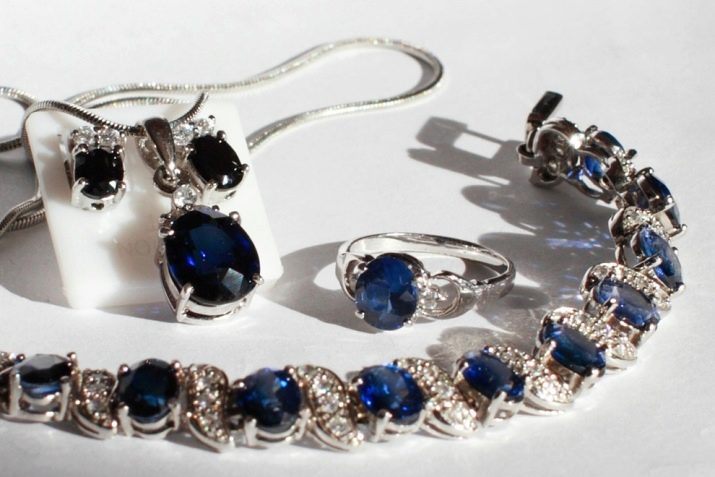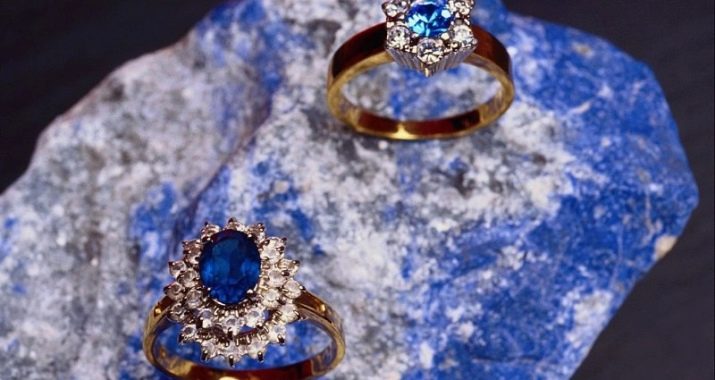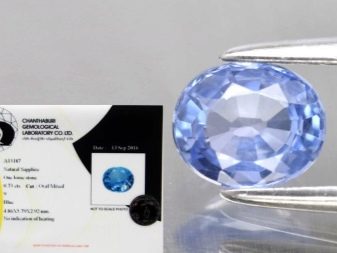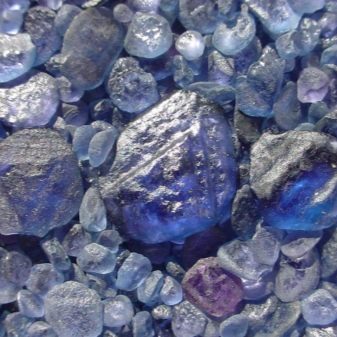Since ancient times, people have loved to adorn themselves. At first it was simple wreaths and necklaces of bright colors, then shells and beautiful minerals. Later, people learned to process natural, often nondescript crystals, so that they became genuine treasures. This article will focus on sapphires.

Main characteristics
Sapphire is one of the most beautiful and expensive natural gemstones, and it has always been this way, since ancient times, when a person learned to extract and process these natural crystals.
Sapphire, like its fellow ruby, belongs to corundum - a mineral, the basis of which is aluminum oxide with various impurities, which color the crystals in various colors. Distinguish between classic and fantasy sapphires. The first group is blue crystals of various shades. Well, the second includes all the other corundums, except for rich red - these are rubies.
The main parameters used to evaluate the color of precious stones, including sapphires, are shade, color saturation, and lightness. There is no standard shade for fancy sapphires due to the variety of their colors. And for classic blue crystals, cornflower tone is considered the best - the color of sapphires mined in Kashmir.

Physical properties of corundum
| Indicators | Value |
| Structure | Alumina with various inclusions |
| Mohs hardness | 9 (second after diamond) |
| Transparency | Varies from opaque to transparent |
| Density, g / cm3 | 3,95 – 4,0 |
| Refractive index | 1,766 – 1,774 |
| Electrical conductivity | dielectric |
Sapphires are considered powerful talismans.Many sources write that they help from the evil eye, damage and deception, contribute to the acquisition of wisdom and tranquility. Mariners and travelers liked to wear it, especially they liked aster stones (star sapphires).
It is also believed that the wearing of corundum has a beneficial effect on people suffering from insomnia, rheumatism, epilepsy and various infections.

What determines the shade?
The color of a stone depends on its composition. Even a small presence of impurities can dramatically change the color and purity of sapphire.
The effect of impurities on the color of the mineral
| Impurities | Stone color |
| Salts of titanium and iron | Blue, cyan, bluish gray |
| High titanium content | Orange |
| Vanadium oxide | Purple or reddish tint |
| High iron | Blue green |
| Nickel oxide | Yellow |
| Salts of magnesium, zinc and cobalt | Green |
| Salts of chromium, iron and titanium | Pink, purple, lilac |
| Hematite (as plate crystals) | Brown |
| Almost complete absence of extraneous inclusions | Colorless, white |

Color saturation largely depends on the amount and percentage of foreign matter. According to a simplified scheme, blue sapphires are divided into bright, medium and light stones. When assessing crystals, professionals use 5 degrees of lightness and 3 categories of saturation.
The main color scheme
Colored sapphires come in a variety of colors, except, as mentioned above, saturated red.

The most expensive are rich blue gems, followed by pinkish-orange stones ("padparaja", which means "lotus flower"), then pure pink crystals. Yellow transparent sapphires and blue opaque asteria (stones, on the polished surface of which the figure of a 6- or 12-ray star is clearly visible) occupy the 4th place in terms of high cost. Below are orange, green, purple gems, as well as sapphires with the alexandrite effect - that is, changing color depending on the lighting. The cheapest are valued colorless stones, as well as black simple and star-shaped. In fact, it is not entirely correct to call black sapphires black - they are blue, just because of the high color saturation they seem dark and opaque.






Sometimes crystals are found, one part of which is painted in one color, for example, blue, and the second in another, for example, yellow. Such stones are called polychrome, or multicolor; they are rather highly valued because of their rarity.


How to choose?
When choosing jewelry with any precious or semi-precious stones, require a certificate confirming the natural origin of the mineral. Nowadays, many precious stones are grown artificially in autoclaves. With the naked eye, they cannot be distinguished from natural ones. But there is a significant difference in price, because natural sapphires are very, very expensive, and this already creates great opportunities for all kinds of scammers. Therefore, do not forget about the certificates, and in the case of the acquisition of large stones do not be too lazy to order an examination, because it is very easy to be deceived.
There is an easy way to check the naturalness of the stone: direct the light of an ultraviolet lamp on it. Natural crystals should turn green, but synthetic ones should not.


When viewing the certificate, pay attention to the evaluation of the stone, for example, 1/2. The first digit indicates the color of the stone (1 - blue), and the second - the quality category (depending on the purity of the stone and the level of transparency of the crystal). There are only 4 categories of quality. The first includes stones of the highest purity and transparency, in which there are practically no defects. The second includes transparent sapphires with worse quality - with small defects or with an overly saturated color. In opaque stones of the third category, defects can be seen with the naked eye. Well, the fourth group includes turbid crystals with pronounced defects.

Also, do not forget to see if the stone is ennobled or not. To improve quality, most natural sapphires are thermally processed, that is, heated. This allows you to change the color of the stone, increase its transparency, etc. This treatment has no effect on the physical properties of the mineral, but unapproved natural sapphires are much higher than processed ones.


Look through the stone at the light that is best natural. Inside the crystal, you can often see microcracks that reduce the quality, and, accordingly, the price of the stone. Appreciate the faceting of the stone. Sometimes, due to improper processing or dishonest polishing, the appearance of the gem tarnishes, as it were, not reflecting all its possible beauty.
The price of crystals also greatly depends on the country of their production. The most expensive stones are those mined in Kashmir, Sri Lanka and Tanzania. The second are Burmese and Thai crystals. Following are the ones mined in all other countries of the world, except Australia, since Australian sapphires are on the bottom line of the price rating of these minerals. It should be noted that the Kashmir deposit has already been developed and closed. There are also several corundum deposits in the Russian Federation - on the Kola Peninsula (blue, greenish, cornflower blue) and in the Urals (gray-blue).
Also in Russia, as in other countries, artificial corundums are produced, because these stones are used not only in jewelry, but also in many industries.


The properties of sapphire are described below.










